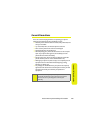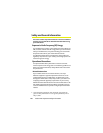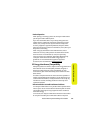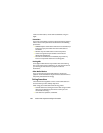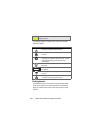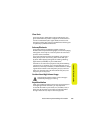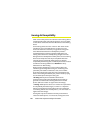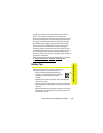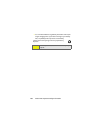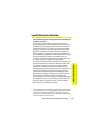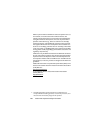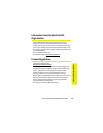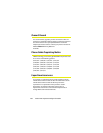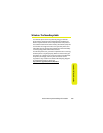
186 Section 4A: Important Safety Information
Hearing Aid Compatibility
When some mobile phones are used with certain hearing devices
(including hearing aids and cochlear implants), users may detect
a noise which can interfere with the effectiveness of the hearing
device.
Some hearing devices are more “immune” than others to this
interference noise, and mobile phones can also vary in the
amount of interference noise they may generate at any given
time. ANSI standard C63.19 was developed to provide a
standardized means of measuring both mobile phone and
hearing aids to determine usability rating categories for both.
Ratings have been developed for mobile phones to assist hearing
device users find phones that may be compatible with their
particular hearing aid. Not all mobile phones are rated for
compatibility with hearing aids, but mobile phones that are rated
should have the rating available. Your MOTOKRZR K1m by
Motorola has an M4 T4 rating.
Results will vary depending on a user’s hearing device and
individual type and degree of hearing loss. If a hearing aid is
particularly vulnerable to interference noise, even a mobile
phone with a higher rating may still cause unacceptable noise
levels in the hearing aid. Evaluate your personal needs by trying
out the mobile phone with your hearing aid.
“M” Rating: Mobile phones rated M3 or M4 meet FCC
requirements for hearing aid compatibility and are likely to
generate less interference to hearing devices than unrated
phones. (M4 is the “better” or higher of the two ratings.)
“T” Rating: Mobile phones rated T3 or T4 meet FCC requirements
for compatibility with telecoil-type (“T Switch” or “Telephone
Switch”) hearing devices and are likely to be more usable with
such hearing devices than unrated phones. (T4 is the “better” or
higher of the two ratings.)
Hearing aids may also be rated for immunity to interference
noise from mobile phones. In some cases, hearing aids can be




